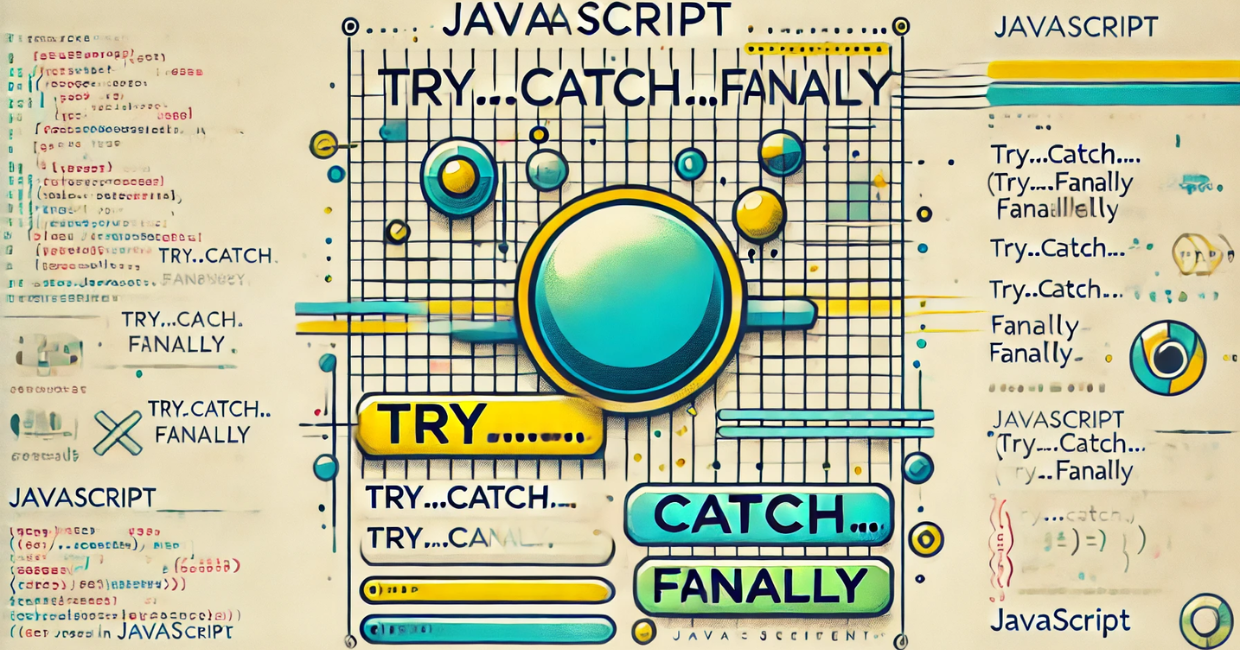Introduction
JavaScript is a powerful and flexible language that runs in web browsers and server-side environments like Node.js. However, errors are inevitable in programming. Whether due to incorrect user input, network failures, or logical mistakes, handling errors effectively is crucial for creating robust applications.
JavaScript provides a structured way to handle javascript errors using the try, catch, and finally blocks. These constructs allow developers to manage javascript errors gracefully, preventing them from crashing applications and improving the user experience.
In this article, we will explore JavaScript error handling in depth, understand the mechanics of try, catch, and finally, and see how they can be applied in real-world applications.
How to Select and Manipulate Elements in JavaScript
Understanding Errors in JavaScript
Before diving into try, catch, and finally, it is essential to understand the different types of errors in JavaScript:
- Syntax Errors – These occur when the JavaScript engine encounters incorrect syntax, preventing the script from running.
console.log("Hello World" // Missing closing parenthesis results in a SyntaxError - Reference Errors – These occur when a variable or function that does not exist is referenced.
console.log(myVariable); // ReferenceError: myVariable is not defined - Type Errors – These happen when an operation is performed on a variable of an incorrect type.
let num = 5; num.toUpperCase(); // TypeError: num.toUpperCase is not a function - Range Errors – These occur when a number is outside the allowable range.
let arr = new Array(-1); // RangeError: Invalid array length - Eval Errors – These are rare and occur when the
eval()function is used incorrectly. - URI Errors – These occur when invalid characters are used in URI functions like
decodeURIComponent().
The Try-Catch-Finally Statement
JavaScript provides the try...catch...finally block to handle errors effectively.
1. The Try Block
The try block contains the code that might throw an error. If an error occurs within this block, JavaScript immediately stops execution and jumps to the catch block.
2. The Catch Block
The catch block handles errors thrown in the try block. It receives the error object, which contains information about the error.
3. The Finally Block
The finally block contains code that will execute regardless of whether an error occurred or not. It is useful for cleanup operations like closing database connections or clearing temporary variables.
Syntax of Try-Catch-Finally
Here is the basic syntax:
try {
// Code that may throw an error
} catch (error) {
// Code to handle the error
} finally {
// Code that always runs, even if an error occurs
}
Example 1: Basic Try-Catch
try {
let num = 10;
let result = num.toUpperCase(); // This will throw a TypeError
} catch (error) {
console.log("An error occurred:", error.message);
}
Output:
An error occurred: num.toUpperCase is not a function
Example 2: Using Finally Block
try {
let data = JSON.parse("Invalid JSON String");
} catch (error) {
console.log("Error parsing JSON:", error.message);
} finally {
console.log("Execution completed");
}
Output:
Error parsing JSON: Unexpected token I in JSON at position 0
Execution completed
Example 3: Handling Specific Error Types
try {
let num = 10;
num.toUpperCase();
} catch (error) {
if (error instanceof TypeError) {
console.log("Type Error:", error.message);
} else {
console.log("Unknown error:", error.message);
}
}
Output:
Type Error: num.toUpperCase is not a function
Throwing Custom Errors
Sometimes, developers need to generate their own errors. This can be done using the throw statement.
function divide(a, b) {
if (b === 0) {
throw new Error("Cannot divide by zero");
}
return a / b;
}
try {
console.log(divide(10, 0));
} catch (error) {
console.log("Error:", error.message);
}
Output:
Error: Cannot divide by zero
Nested Try-Catch Blocks
JavaScript allows nesting try...catch blocks, which can be useful in complex applications.
try {
try {
let data = JSON.parse("Invalid JSON");
} catch (error) {
console.log("Inner Catch:", error.message);
throw new Error("Re-throwing error");
}
} catch (error) {
console.log("Outer Catch:", error.message);
}
Output:
Inner Catch: Unexpected token I in JSON at position 0
Outer Catch: Re-throwing error
Finally Block in Resource Cleanup
The finally block is commonly used to release resources.
function fetchData() {
try {
console.log("Fetching data...");
throw new Error("Network error");
} catch (error) {
console.log("Error:", error.message);
} finally {
console.log("Closing database connection...");
}
}
fetchData();
Output:
Fetching data...
Error: Network error
Closing database connection...
Error Handling in Asynchronous Code
Handling errors in asynchronous operations requires special techniques.
Using Try-Catch with Async/Await
async function fetchData() {
try {
let response = await fetch("invalid-url");
let data = await response.json();
console.log(data);
} catch (error) {
console.log("Fetch error:", error.message);
} finally {
console.log("Request completed");
}
}
fetchData();
Best Practices for JavaScript Error Handling
- Always Use Try-Catch for Critical Code – Catch and handle errors where failure could affect the user experience.
- Use Specific Error Types – Handle errors differently based on their types to provide meaningful responses.
- Avoid Silent Failures – Always log errors instead of ignoring them.
- Use Finally for Cleanup – Ensure resources like database connections or file handles are closed properly.
- Do Not Overuse Try-Catch – Only use try-catch where necessary. Avoid wrapping entire scripts in try-catch.
- Use Logging and Monitoring – Implement logging systems like
console.error()or third-party monitoring tools.
Conclusion
Javascript error handling is an essential part of JavaScript programming. The try, catch, and finally blocks allow developers to catch and manage errors effectively. Proper error handling improves application stability, enhances user experience, and helps debug issues efficiently.
By following best practices and understanding different types of errors, developers can write more reliable JavaScript code.
